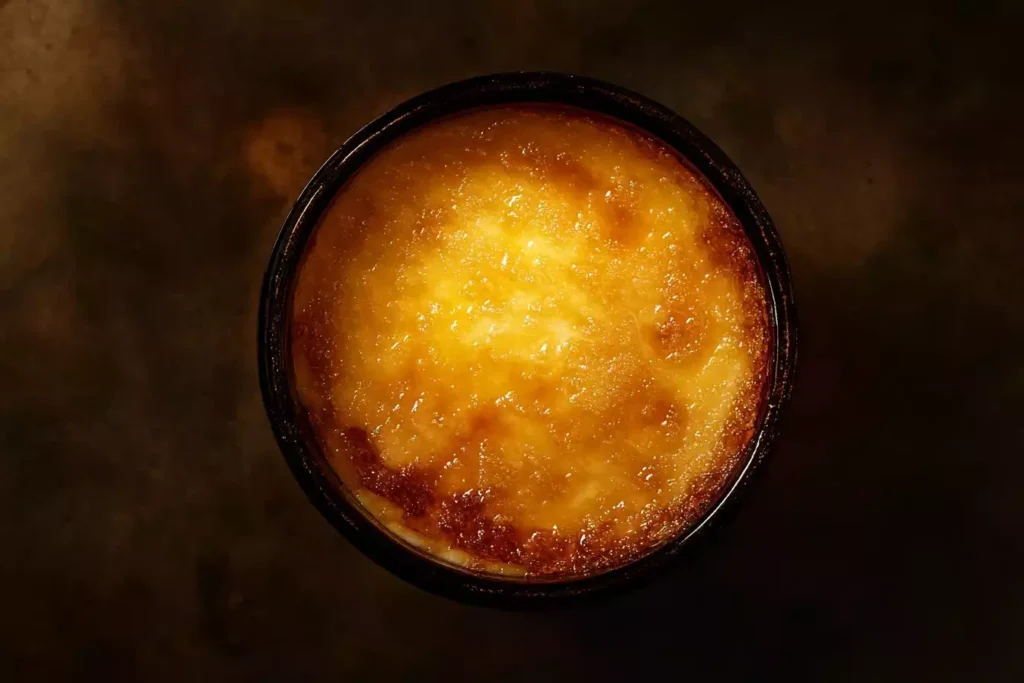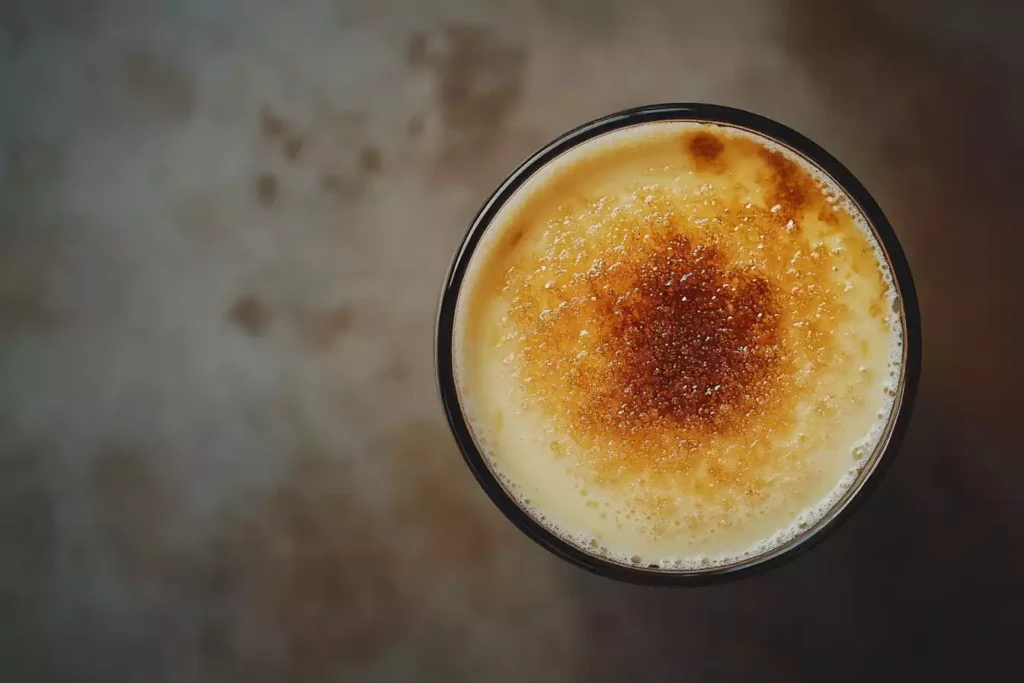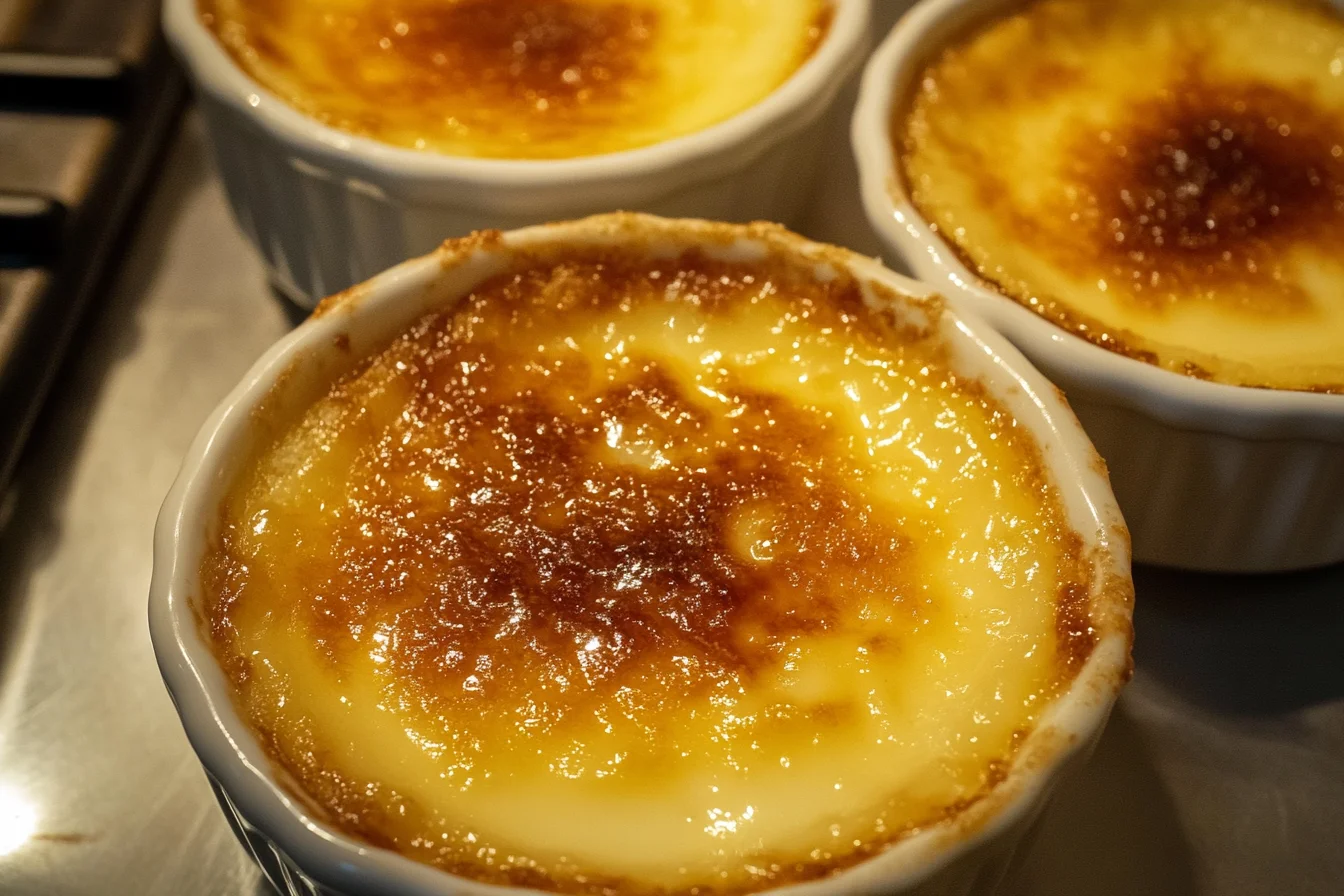What type of cream is best for crème brûlée? Learn how to pick the perfect cream for a rich, silky dessert.
Table of Contents
Crème brûlée is a classic French dessert beloved for its velvety custard and crisp caramelized sugar topping. What type of cream is best for crème brûlée? This question often arises among home cooks and pastry enthusiasts, especially those seeking to perfect their favorite dessert. Choosing the right cream can transform your custard’s texture, flavor, and overall quality. Basically, cream plays a crucial role in achieving that creamy mouthfeel and deep, indulgent taste.
Indeed, the right cream choice helps ensure that your crème brûlée boasts a perfectly smooth consistency and balanced richness. Conversely, using a less ideal option can lead to a dessert that lacks depth or becomes overly dense. Eventually, by understanding cream varieties and their properties, you can confidently create a truly memorable crème brûlée.
Understanding Crème Brûlée’s Foundational Elements

Crème brûlée, basically meaning “burnt cream,” consists of a rich custard base topped with a layer of crisp caramelized sugar. Initially, this dessert was popularized in France, and now it graces menus all over the world. At its core, crème brûlée typically includes egg yolks, sugar, vanilla, and cream. Because cream forms the foundation of this dessert, selecting it carefully becomes essential. Undoubtedly, the cream you pick affects the dessert’s mouthfeel, sweetness perception, and final flavor notes. Accordingly, the type of cream you choose should enhance the custard’s silkiness and round, luxurious taste.
Moreover, cream’s fat content plays a huge role in determining texture. Generally, a richer cream yields a smoother, denser custard. Meanwhile, lower-fat creams might fail to deliver the desired creaminess. Therefore, understanding cream’s different varieties sets the stage for choosing the best one for your crème brûlée. Especially if your goal involves a dessert with a luscious consistency and a delicate flavor, you must carefully consider which cream aligns with your vision.
What Type of Cream Is Best for Crème Brûlée? Understanding Different Cream Varieties
When pondering what type of cream is best for crème brûlée?, you’ll find many options available in U.S. grocery stores. Chiefly, heavy cream, whipping cream, and, in some areas, double cream present popular choices. Comparatively, these creams vary in fat content. Heavy cream often contains about 36% fat, while whipping cream typically offers around 30% to 35%. Double cream, favored in certain regions outside the U.S., boasts around 48% fat, providing an even richer mouthfeel.
Equally important is understanding how fat content influences your custard. Consequently, higher-fat creams often produce a creamier, more decadent texture. Conversely, lighter creams may result in a thinner custard that lacks the luxurious feel many crave. Altogether, the key is striking a balance. Generally, U.S. recipes for crème brûlée lean toward heavy cream because it reliably creates that classic indulgent texture. Nevertheless, depending on your palate and dietary needs, you might experiment with slightly lighter or richer options.
What Type of Cream Is Best for Crème Brûlée? The Influence of Dairy Origin
While considering what type of cream is best for crème brûlée?, pay attention to dairy origin. For example, cream sourced from grass-fed cows can possess richer flavor notes. Specifically, these creams may provide subtle hints of fresh grass, sweet creaminess, and a cleaner finish. Comparatively, conventional cream still works well, but might lack the nuanced flavors that high-quality dairy can bring.
Additionally, organic or local dairy farms often produce cream with superior freshness. Because freshness matters, the flavor and aroma can stand out more clearly in your custard. Eventually, this attention to detail enhances the overall dessert experience. Undoubtedly, top-notch dairy makes a noticeable difference in the final product.
Meanwhile, the pasteurization process also influences taste. Ultra-pasteurized cream lasts longer but may taste less fresh. Conversely, regular pasteurized cream tends to maintain more of its natural flavor. Essentially, your choice of dairy origin affects the intensity and subtlety of the dessert’s taste.
What Type of Cream Is Best for Crème Brûlée? The Role of Fat Content and Texture

Heavy cream delivers a fat content that creates the ideal silkiness in crème brûlée. Comparatively, lighter creams like half-and-half contain less fat. Thus, they produce a less creamy custard. Therefore, heavy cream emerges as the most reliable option. Particularly, it offers the richness necessary for a proper set and stable custard.
However, this does not mean you cannot experiment. Another approach involves blending heavy cream with a touch of whipping cream if you prefer a slightly lighter mouthfeel. Still, remember that reducing the fat content can diminish that signature velvety sensation. Therefore, the fat content directly correlates with achieving the perfect texture for crème brûlée.
What Type of Cream Is Best for Crème Brûlée? Avoiding Common Mistakes
While exploring what type of cream is best for crème brûlée?, it’s wise to note common pitfalls. Chiefly, using half-and-half or even milk will reduce the dessert’s richness. Consequently, the custard may turn out too thin or watery. Furthermore, non-dairy substitutes like almond milk or soy cream often lack the necessary fat content and can result in a less stable set.
Nevertheless, if you must use alternatives due to dietary restrictions, seek options specifically designed for desserts. For instance, a high-fat coconut cream might replicate some of the richness found in dairy cream. Equally important is ensuring any alternative cream is neutral in flavor. Otherwise, you risk shifting the dessert’s delicate flavor profile.
Another issue arises when people choose ultra-low-fat creams. Basically, these yield a texture that fails to live up to crème brûlée’s reputation. Thus, sticking with heavy cream or at least a cream containing 30% fat or more helps ensure success.
To modify cream ratios, start with a standard heavy cream base. Afterward, experiment by adding small amounts of lighter cream. Consequently, if you find the custard too heavy, adjust by reducing the heavy cream incrementally. Conversely, if it seems too thin, add more heavy cream. Eventually, you’ll find the sweet spot that delivers the perfect consistency.
What Type of Cream Is Best for Crème Brûlée? Perfecting Flavor and Consistency
What type of cream is best for crème brûlée? Ultimately, heavy cream remains the gold standard. Nonetheless, the cream you select must also complement the dessert’s flavors. Basically, the cream should be mild enough to let vanilla, caramelized sugar, and subtle flavor additions shine.
For example, an organic heavy cream may have a whisper of sweetness and a certain complexity that enhances the custard’s depth. Meanwhile, a standard store-bought heavy cream works perfectly fine for most recipes. Eventually, you want a cream that supports the flavors, making them more pronounced and luscious.
What Type of Cream Is Best for Crème Brûlée? Exploring Plant-Based Alternatives
In certain cases, dietary restrictions prompt questions like what type of cream is best for crème brûlée? for vegans or lactose-intolerant individuals. Comparatively, non-dairy creams like coconut cream or cashew cream offer a rich, fatty texture that can mimic dairy cream. However, these alternatives often impart their own flavors. Specifically, coconut cream adds a tropical note that, while pleasant, changes the dessert’s character.
Nevertheless, some plant-based creams formulated for baking yield results closer to traditional crème brûlée. Particularly, look for non-dairy creams with a high-fat content. Additionally, try to choose neutral-flavored options. This ensures the custard’s classic flavor profile remains intact. However, plant-based creams may not caramelize as beautifully as dairy cream custards. Nonetheless, with experimentation, you can approach a similar final product.
Even if you find a suitable vegan alternative, understand it might not taste identical to traditional crème brûlée. Conversely, some substitutions might create a dessert that stands on its own merits. Eventually, the choice depends on your dietary constraints and taste preferences.
Additional Flavor Enhancements
Cream choice also influences how well other flavors integrate. For instance, if you infuse your cream with a vanilla bean, the fat content helps carry the vanilla’s essence throughout. Comparatively, a lower-fat cream might not highlight these subtle flavors as effectively.
Additionally, you can experiment with other flavorings. Citrus zest, coffee beans, or even spices like cardamom can be gently steeped in your chosen cream. Thus, you add complexity without compromising texture. Because cream acts as a flavor vehicle, ensuring you pick a high-quality option allows every infusion to shine.
Choosing and Storing the Cream
When deciding what type of cream is best for crème brûlée?, freshness is critical. Undoubtedly, fresh cream yields a brighter, cleaner flavor. When shopping, look for cartons of heavy cream with the latest possible expiration date. Consequently, you reduce the chance of off-flavors.
Furthermore, store your cream properly in the coldest part of the refrigerator. Additionally, avoid keeping it near foods with strong odors, as cream can absorb surrounding flavors. Because dairy is delicate, ensuring optimal storage conditions helps preserve its subtle taste and creamy texture. Thus, when you whisk it into your custard base, it will perform to perfection.
Likewise, consider using the cream shortly after purchase. The fresher the cream, the better the final dessert. Eventually, this attention to detail makes a noticeable difference in the custard’s overall taste.
Technique Matters, Too
While the choice of cream is crucial, technique also influences how your crème brûlée turns out. Initially, gently heating the cream with vanilla extracts its aroma. Meanwhile, proper tempering of egg yolks prevents curdling. Consequently, even the best cream won’t shine if you rush these steps.
Additionally, strain the custard mixture to remove any lumps before baking. This ensures the final dessert’s smooth texture. Basically, technique and ingredient quality work hand in hand. Thus, to achieve excellence, pay equal attention to both factors.
Over-baking can cause a rubbery texture, diminishing the cream’s role in creating a silky custard. Conversely, under-baking leaves the center too loose. Therefore, watch the custards carefully to achieve the perfect jiggle. Eventually, balancing cream choice and careful technique leads to a flawless dessert.
Presentation and Caramelization
High-quality cream does more than create a luxurious custard. Generally, a rich cream base aligns perfectly with the sweet, brittle caramel top. When you torch the sugar, the dessert gains a beautiful contrast: a crunchy, caramelized shell and a smooth interior.
Hence, selecting the right cream lays the groundwork for this sensory experience. Basically, the luscious custard beneath the crackly sugar becomes a canvas for the flavor complexities you’ve built. Thus, what type of cream is best for crème brûlée? leads not only to better taste but also to a more enchanting presentation.
Frequently Asked Questions (FAQ)
What is the secret to crème brûlée?
The secret involves using high-quality heavy cream, fresh eggs, and top-notch vanilla. Equally important is proper technique. Basically, gently heating your cream and tempering your egg yolks ensures a creamy custard. Moreover, controlling baking time and using a gentle water bath creates that signature velvety texture. Consequently, once you caramelize the sugar on top, you achieve the perfect contrast of creamy and crunchy. Learn more
What’s the difference between crème brûlée and custard?
Crème brûlée is a type of baked custard, yet not all custards are crème brûlée. Indeed, custards can range from pastry cream to flan. However, crème brûlée specifically features a smooth custard base topped with a thin caramelized sugar layer. Conversely, other custards may lack this distinctive, brittle sugar shell. Eventually, this caramelized top sets crème brûlée apart, adding a crackly texture to complement its creamy center. Learn more
What is crème brûlée mostly made of?
Crème brûlée primarily consists of cream, egg yolks, and sugar. Basically, these three ingredients form the core structure. The cream provides richness, the egg yolks thicken the mixture into a custard, and the sugar sweetens the dessert. Additionally, vanilla or other flavorings often enhance the taste. Finally, a sprinkling of sugar on top is caramelized to create the signature crisp layer. Altogether, these simple components come together to form a luxurious dessert.
Suggested Articles Links:

